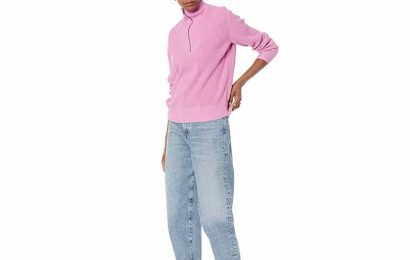Wearing a mask while out exercising on busy roads has another benefit besides helping protect against Covid. By Nicky Pellegrino.
Since the pandemic began, it has become more common to see people wearing masks while out exercising in busy urban areas. As well as protection from Covid-19, those joggers, walkers and cyclists are getting another benefit: a well-fitting N95-style mask will filter out at least some air pollution.
Breathing in ultra-fine particles of pollution is bad for our health. The haze of pollution doesn’t enter only our lungs; there is evidence that it passes into the bloodstream, potentially affecting every organ and cell in the body.
There are tens of thousands of scientific studies that demonstrate the harms of inhaling toxic air. As well as respiratory illness, it has been linked to a number of cancers and an increased risk of heart attack and stroke. Particles of air pollution have been found lodged in pregnant women’s placentas and it has been associated with low birth weight in babies.
The more heavily you breathe, the more air pollutants you draw in. Now there is new research to show that if people exercise vigorously in poor-quality air, the expected brain improvements from the physical activity almost disappear.
Researchers from the universities of Arizona and Southern California, using data from the UK Biobank, found that vigorous exercise was linked to better brain health and a reduced risk of dementia, with healthier grey and white matter, unless exercisers were exposed to even moderate levels of air pollution.
In another recent study, researchers from Fudan University in China found that men living in areas of high air pollution have decreased sperm motility.
The World Health Organisation (WHO) claims that a whopping 99 per cent of the global population breathe air with levels of pollutants that exceed its guideline limits and has estimated that this kills about seven million people each year.
In New Zealand, our long narrow land mass and often windy weather play to our advantage. Also, as an isolated island nation, we are rarely affected by pollution from our neighbours. Nevertheless, low-quality air is still causing premature death and hospitalisation.
“What I generally say about New Zealand’s air quality is that it is absolutely brilliant most of the time in most places, but there are some key exceptions,” says Niwaair-quality scientist Dr Ian Longley.
One of those exceptions is when you are beside a road busy with traffic. “Our vehicles are by no means the cleanest in the world, and morning rush hour is particularly bad because there isn’t as much wind to blow the pollution away,” explains Longley.
The continued use of solid fuels such as wood and coal for heat is contributing to the problem.
“So, actually, we get extremes of air quality, depending on where you are, the time of day and the time of year,” says Longley. “In areas of the South Island, the air quality can be as bad as Chinese cities on some winter nights.”
Longley monitored air quality in Auckland, Wellington and Christchurch for seven weeks during the first lockdown, finding that it changed dramatically. He estimates that pollution was down by three-quarters on average and many Aucklanders reduced their exposure to traffic pollution by 90 per cent during lockdown.
“In a sense, this has proved something that I’ve been saying all along. Pretty much all our air pollution is potentially within our control,” he says.
Transitioning away from solid and fossil fuels is going to take time. Meanwhile, says Longley, all the evidence shows that doing exercise outweighs the risks posed by air pollution.
“Still, you don’t want to breathe in pollution if you don’t have to. One piece of research I was involved with looked at bike lanes. We found that a cyclist doesn’t need to be too far away from the traffic to get a big benefit. Five metres and 10 metres actually makes a big difference, 20 metres even more so, to reducing how much pollution you are breathing.”
If you can’t avoid cycling through city traffic, then it is worthwhile putting on a mask.
“It won’t filter out everything but it will certainly reduce the dose to the body,” says Longley. In a way, mask wearing is the ambulance at the bottom of the cliff, he adds. “It’s not solving the problem, but it does highlight that there’s a problem that needs solving.”
Source: Read Full Article






